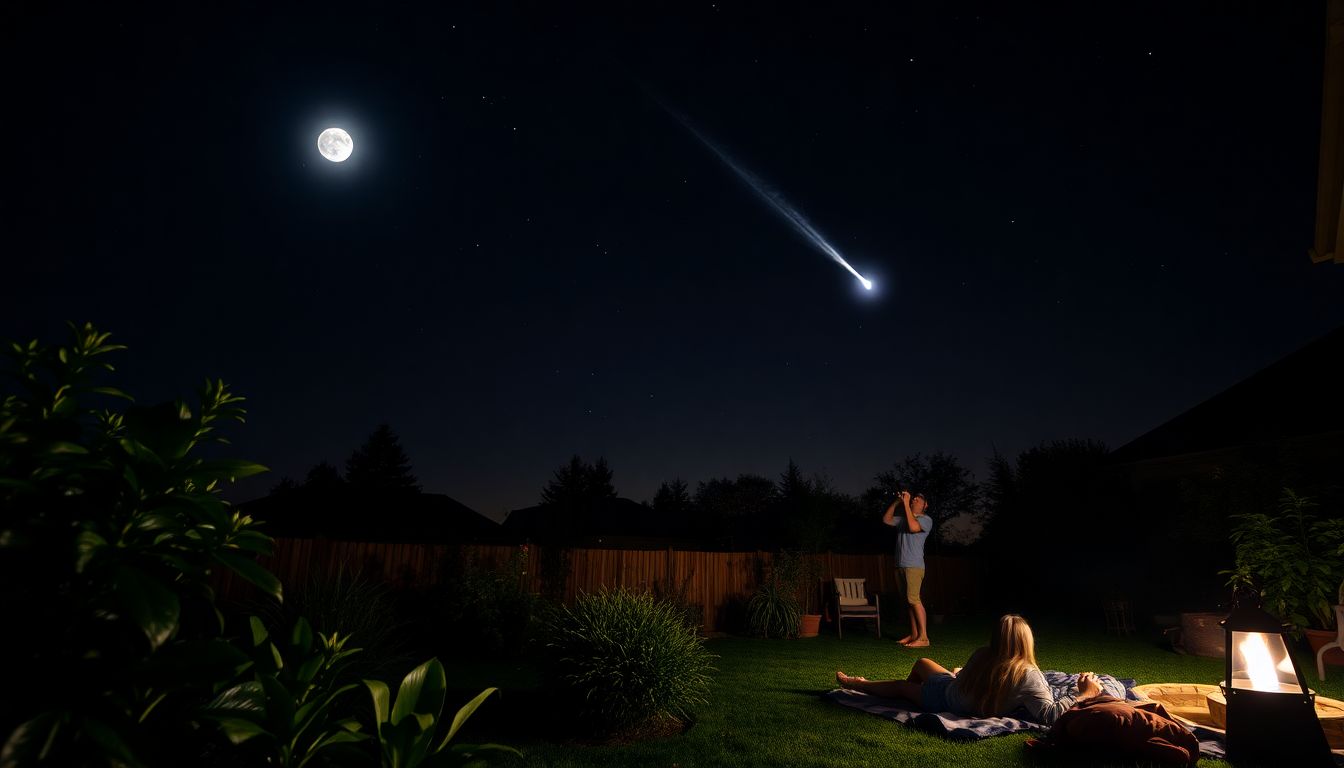
Can I See a Comet from My Backyard and Where Should I Look?
Introduction
Have you ever stared up at the night sky and wondered if a bright comet might be passing over your house? Watching a comet with just your eyes is a rare and exciting treat. These icy visitors from deep space usually appear bright for only a short time and are tough to catch without the right conditions. Recently, people around the world got a glimpse of Comet Neowise in 2020, sparking many new curiosity. But how can you see a comet from your backyard? It all depends on where you are, when you look, and how clear the sky is.
Understanding Comets and Their Visibility
What Are Comets?
Comets are icy bodies that hang out in the farthest parts of our solar system. Think of them as giant cosmic snowballs made of ice, dust, and rocky material. When they head toward the Sun, they warm up. This causes a glowing tail to form, which points away from the Sun because of solar wind. The bright glow and tail are what make comets so stunning and easy to recognize.
How Often Do Comets Appear?
Some comets pass close to Earth regularly, like the famous Halley’s Comet, which shows up roughly every 75 years. Others might only come once in a lifetime or only become visible during specific years. Recently, Comet Bennett in 2022 and Comet Neowise in 2020 lit up the sky. Experts predict a few notable comets will appear in upcoming years, so keep an eye on space news.
Brightness and Visibility Factors
Not all comets are easy to see. Brightness depends on how close they are to Earth, how active they are, and their size. A big, active comet can be seen easily with the naked eye, even from city lights. But smaller or farther comets might need binoculars or a telescope to see well. Brightness also varies during their journey — some become spectacular in a short window.
Best Conditions for Viewing a Comet from Your Backyard
Ideal Time and Date
The best time to look for comets is at night, after sunset and before dawn. The months around the comet’s closest approach to Earth are your best chances. Also, moon phases matter a lot. A New Moon night, when the sky is darkest, gives the clearest view free of bright moonlight that can hide faint objects.
Weather Conditions and Light Pollution
Clear skies are a must. Clouds or fog block your view and make spotting a comet impossible. Dark skies are just as important. City lights can drown out faint comets, so try to find a quiet, dark spot away from streetlights. Parks, hilltops, or rural areas are perfect for stargazing.
Equipment Recommendations
You don’t always need a telescope. A good pair of binoculars can reveal more detail than the naked eye. If you want to see a comet in detail, a small telescope helps. Always clean your lenses, stabilize your equipment, and plan your viewing in advance. Bring a flashlight with a red light to see your gear without ruining your night vision.
Where to Look for Comets in the Night Sky
Identifying Constellations and Directions
Knowing the night sky helps a lot. Learn constellations like Orion, Ursa Major, or Cassiopeia. They act as landmarks. Mobile apps and star charts can tell you where to look based on your location. Most comets tend to appear in or near certain constellations during their best viewing times.
Positioning and Rotation of the Sky
Comets move slowly across the sky. They often appear low on the horizon after sunset or late at night, moving upward or across the sky. Watching the sky for a few nights can help you track their movement. As the Earth spins, the comet’s position shifts, so check daily updates.
Regions of the Sky to Focus On
Recent comets often appear near specific stars or constellations. For example, Comet Neowise was near the Big Dipper. Look for bright streaks or fuzzy patches in the spots near these landmarks. Online tools can give you precise locations based on the date.
Practical Tips for Successful Comet Observation
Planning Your Viewing Session
Start checking for predictions from astronomy websites or apps a few days before. Many sites give details about visibility, best times, and location hints. Set alarms or reminders for prime viewing hours to avoid missing the opportunity.
Minimizing Distractions and Enhancing Sightings
Turn off unnecessary lights nearby. Bring a comfortable chair and dress warmly if it’s cold outside. Keep your binoculars or telescope steady with a tripod or a stable surface. Darkness and patience are your best friends.
Recording and Sharing Your Experience
Astrophotography makes your comet sighting even more special. Use a camera with long exposures or your smartphone on a tripod. Share your photos and experiences on social media or astronomy forums to connect with other sky enthusiasts.
Conclusion
Seeing a comet from your backyard isn’t just about luck — it’s about timing, location, and preparation. Clear, dark skies during the right time can bring a bright streak across your night. Follow the tips here, stay updated on upcoming celestial events, and you might be one of the lucky few to witness a cosmic visitor. Don’t forget to enjoy the process and share the wonder of the night sky with others.
Additional Resources
- Download star-tracking apps like SkyView or Stellarium
- Visit websites like Heavens-Above and NASA’s comet tracker
- Grab a beginner’s guide to astronomy from your local library
- Join local astronomy clubs for group viewings and tips

